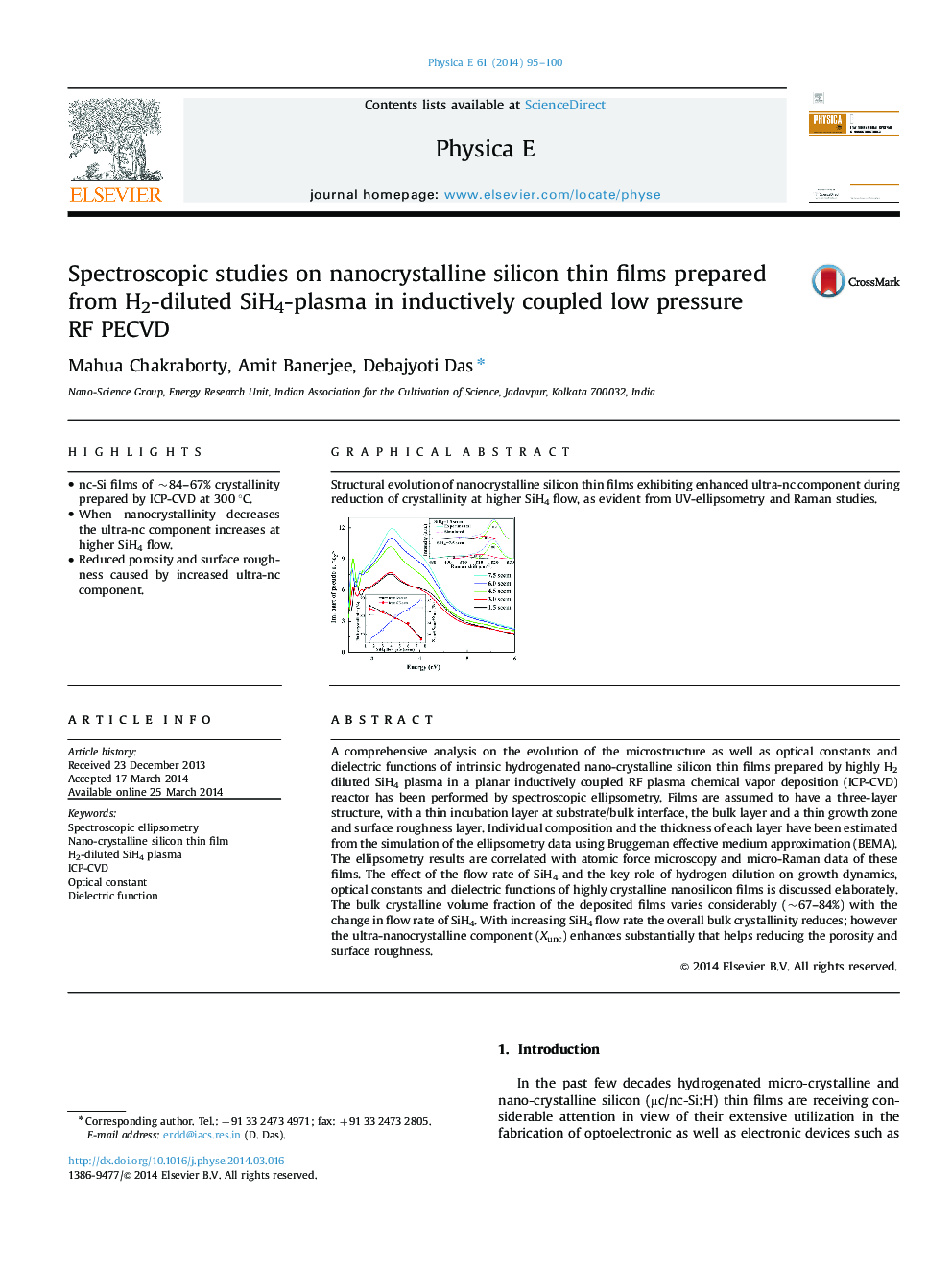| Article ID | Journal | Published Year | Pages | File Type |
|---|---|---|---|---|
| 1544402 | Physica E: Low-dimensional Systems and Nanostructures | 2014 | 6 Pages |
•nc-Si films of ~84–67% crystallinity prepared by ICP-CVD at 300 °C.•When nanocrystallinity decreases the ultra-nc component increases at higher SiH4 flow.•Reduced porosity and surface roughness caused by increased ultra-nc component.
A comprehensive analysis on the evolution of the microstructure as well as optical constants and dielectric functions of intrinsic hydrogenated nano-crystalline silicon thin films prepared by highly H2 diluted SiH4 plasma in a planar inductively coupled RF plasma chemical vapor deposition (ICP-CVD) reactor has been performed by spectroscopic ellipsometry. Films are assumed to have a three-layer structure, with a thin incubation layer at substrate/bulk interface, the bulk layer and a thin growth zone and surface roughness layer. Individual composition and the thickness of each layer have been estimated from the simulation of the ellipsometry data using Bruggeman effective medium approximation (BEMA). The ellipsometry results are correlated with atomic force microscopy and micro-Raman data of these films. The effect of the flow rate of SiH4 and the key role of hydrogen dilution on growth dynamics, optical constants and dielectric functions of highly crystalline nanosilicon films is discussed elaborately. The bulk crystalline volume fraction of the deposited films varies considerably (~67–84%) with the change in flow rate of SiH4. With increasing SiH4 flow rate the overall bulk crystallinity reduces; however the ultra-nanocrystalline component (Xunc) enhances substantially that helps reducing the porosity and surface roughness.
Graphical abstractStructural evolution of nanocrystalline silicon thin films exhibiting enhanced ultra-nc component during reduction of crystallinity at higher SiH4 flow, as evident from UV-ellipsometry and Raman studies. Figure optionsDownload full-size imageDownload as PowerPoint slide
